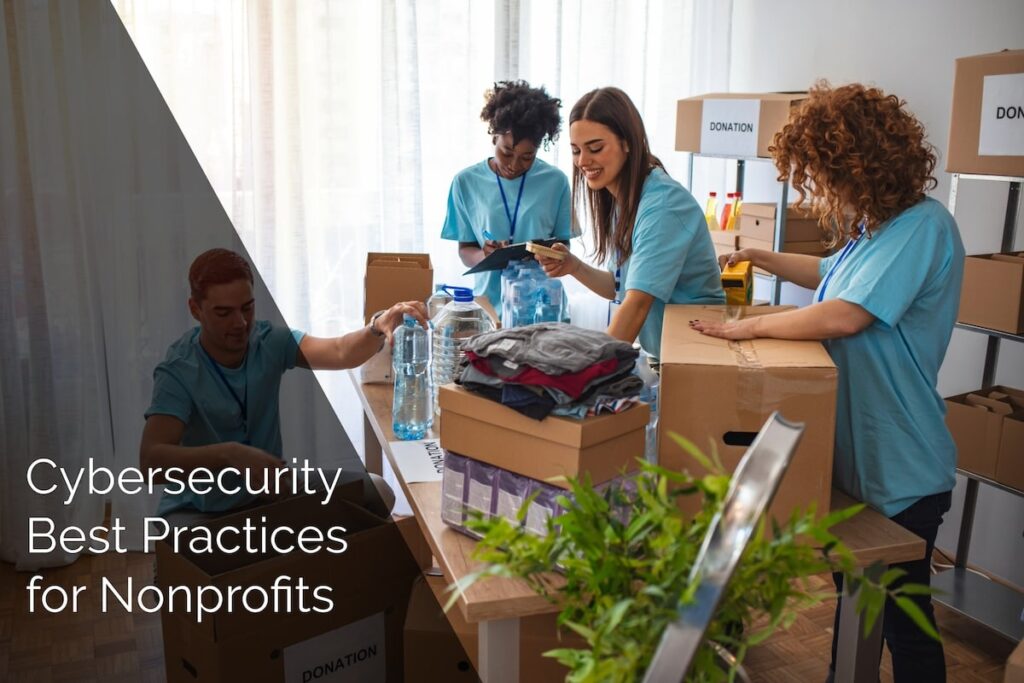In today’s digital age, nonprofits face unique challenges when it comes to cybersecurity. While these organizations often operate with limited resources, the sensitive data they handle—ranging from donor information to confidential client records—makes them prime targets for cyberattacks. This means that, for nonprofits, securing robust cybersecurity measures is not just a technological necessity but a fundamental responsibility to protect the trust and privacy of those they serve. If you run a nonprofit and are looking to better secure your cybersecurity, read on for key cybersecurity practices nonprofits that can hopefully help you safeguard your digital assets and continue your vital work without disruption.
Understanding the Importance of Cybersecurity
Nonprofits manage a wealth of sensitive information, from personal donor details to financial records and strategic plans. So a data breach can lead to severe consequences, including the loss of donor trust, financial loss, and operational disruption. Additionally, cyberattacks can result in significant financial damage, both directly through theft and indirectly through the costs of response and recovery. Moreover, cyber incidents can cripple an organization’s operations, halting their activities and diverting resources away from their core mission.
Nonprofits are particularly vulnerable to certain types of cyber threats, including phishing attacks, ransomware, and data breaches. Phishing attacks involve fraudulent emails designed to trick employees into revealing sensitive information or downloading malicious software. Ransomware is a type of malware that encrypts an organization’s data, rendering it inaccessible until a ransom is paid. Data breaches involve unauthorized access to sensitive information, often due to weak security measures or insider threats.
Cybersecurity Practices for Nonprofits
Run Regular Risk Assessments
If you want to stay on top of identifying potential vulnerabilities within your organization’s digital infrastructure, then conducting regular risk assessments becomes critical. This involves cataloging all digital assets, including hardware, software, and data; determining the types of threats that could impact these assets; identifying weaknesses that could be exploited by threats; and developing plans to address identified vulnerabilities and reduce risk.
Apply Strong Access Controls
Implementing strong access controls plays an important part in preventing unauthorized use of sensitive information. Nonprofits should ensure that employees only have access to the information necessary for their roles by using role-based access controls. Adding an extra layer of security by requiring two or more verification methods to access accounts, known as multi-factor authentication (MFA), can also be beneficial. Another great idea is to periodically audit and update access permissions to reflect any changes in roles or employment status.
Implement Consistent Employee Training
Human error is often a significant factor in cybersecurity breaches; however, regular training can equip employees with the knowledge to recognize and respond to cyber threats. Key training topics should include phishing awareness, safe browsing practices, and proper handling and sharing of sensitive information.
Use Antivirus and Anti-Malware Software
Utilizing robust antivirus and anti-malware software can help you detect and prevent many of the common cyber threats. Remember that it is important to keep the software up-to-date, as regular updates are crucial to defend against the latest threats. Performing routine scans to identify and eliminate potential threats is also necessary.
Build Incident Response Plans
Developing a well-defined incident response plan can help ensure that your organization will be able to respond to any cybersecurity incident quickly and effectively, should one happen. Your plan should include establishing a response team and defining their roles, identifying and assessing the nature and scope of the incident, implementing measures to contain the breach and remove the threat, and restoring operations while reviewing the incident to improve future responses.
Conduct Data Backups
Regular data backups are crucial in ensuring that an organization can recover from a cyber incident with minimal data loss. Best practices for data backups include scheduling regular, automated backups to ensure data is consistently backed up, storing backups in a secure, offsite location to protect against physical disasters, and regularly testing backup systems to ensure data can be successfully restored.
The Role of Leadership in Cybersecurity
Effective cybersecurity requires a strong commitment from an organization’s leadership, leaders should be prioritizing cybersecurity practices for nonprofits by recognizing it as a critical component of organizational strategy. Allocating resources to invest in necessary tools, training, and personnel to enhance cybersecurity is incredibly important to safeguarding any businesses security. Additionally, by promoting a culture of security awareness and proactive behavior among staff leaders can foster a more security-conscious environment.
At RJG Group, we understand the unique cybersecurity challenges faced by nonprofits. Our tailored solutions and expert guidance can help your organization safeguard its digital assets and maintain the trust of your donors and clients. Contact us today to learn more about how we can support your cybersecurity needs. Together, we can create a secure and resilient foundation for your nonprofit’s success.


